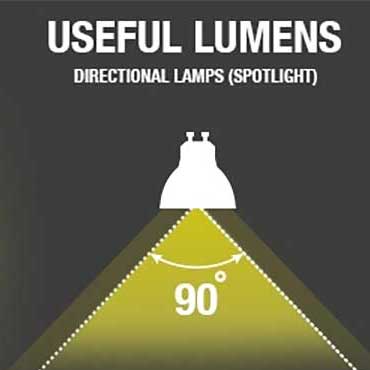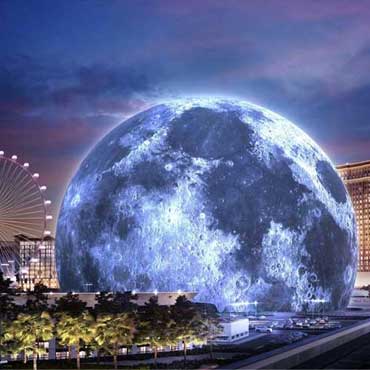When we go to some brand stores to buy TVs, some shoppers will recommend us to buy mini LED TVs and some will recommend us to buy OLED TVs. This article may help you when you are confused by the salesperson’s words and can’t tell the difference between mini LED and OLED display technology and how to choose between these two types of TVs.
What is Mini LED?
Mini LED is actually the LED through the technical means will become smaller and denser, to achieve higher brightness and more uniform backlight effect. It adopts full array display technology, which can realize precise backlight area control and make the picture more detailed and perfect. It can turn off the backlight completely like OLED to realize perfect deep black when it expresses black color, but it will not be used alone like OLED, and is mainly used as the backlight of monitor or TV.
What is OLED?
OLEDs are organic light-emitting diodes, and unlike mini LEDs, OLEDs emit light on their own, so they don’t need the assistance of a backlight. It can also be turned off completely when displaying deep black colors, thus saving a lot of energy loss.
Mini LED vs OLED: Who will win?
In order to compare the two technologies in as much detail as possible, we’re going to look at them from a number of different perspectives.
Color and Resolution
Undoubtedly, both display technologies have amazing colors, which has a lot to do with the fact that they can precisely control each pixel to achieve deeper blacks and brighter whites. In terms of resolution, both mini LED and OLED can be perfectly adapted to the 2K, 4K and 8K resolutions, such as Ultra HD resolution.
Winner: Tie

Black Level
Black level is an important indicator to measure the color difference of a display and whether it is energy-saving or not, which is mainly reflected in LCD and mini LED that need to be based on backlight. While a good quality LCD or mini LED effectively reduces the interference of other light on dark or black areas, OLEDs do not require backlighting and are therefore not affected by black level. OLEDs also completely turn off areas that do not need to be illuminated, resulting in a pure black color and energy savings.
Winner: OLED
Environmentally Friendly
Low carbon and environmental protection has always been advocated as a healthy and environmentally friendly way. Currently the two materials used, OLED is more in line with the concept of energy saving and environmental protection. Because OLED uses Indium Tin Oxide (ITO), which is an organic compound that does not cause any pollution to the environment.
Secondly, as we mentioned above, OLED is able to completely shut down the light-emitting area when it shows black color, thus saving more power. The mini LED, on the other hand, uses an inorganic compound, which has an impact on the environment.
Winner: OLED
Brightness
Brightness has always been a topic of concern. Higher brightness means more scenarios in which it can be used. Brightness represents the intensity of light emitted in physics, and is usually expressed in candelas per square or nits. Mini LEDs usually reach 1500nit easily. Some mini LED TVs (e.g. Hisense TV ULED X U8 series) can also reach 2000nit, and the peak brightness can be even higher.
OLED panels are typically 1200nit, and some OLED screens (e.g. iPhone 15 Pro) can reach 1600nit in peak brightness (HDR), but at these peak brightnesses, the machine can easily be damaged.
Winner: mini LED

Viewing Angle
Viewing angle refers to how well a screen maintains its image quality when the center of the eye is off the screen. This is important for multiple viewers. Although mini LED has a viewing angle of up to 178°, there is still a slight difference with the 180° viewing angle of OLED. It is worth noting that some mini LED monitors may have a viewing angle of less than 140° if they use VA instead of IPS.
Winner: OLED
Color Gamut Value
The color gamut value is also the value of the range of colors that a monitor or TV can produce. While some monitors and TVs on the market will claim a value of 110% of the sRGB spectrum, there are actually only a few high-end displays that can reach this value, and that includes mini LEDs, OLEDs, and micro LEDs.
Winner: Tie
Burn-in
mini LEDs are not plagued by this problem, on the contrary, OLEDs have always had burn-in issues. Burn-in refers to the permanent image ghosting that occurs when a still image is held still for a long period of time, a phenomenon also known as “screen burn-in”. At present, the main way to reduce the light intensity of the blue LED and pixel substitution ① to alleviate this problem, but still can not be completely avoided.
①Pixel Replacement: When a static image is detected to be inactive for a long period of time, free pixels will be automatically selected for equal replacement.
Winner: mini LED
Size
In terms of individual screen size, as of August 2024, TCL released the world’s largest QD-Mini LED TV with a screen size of 115 inches. While OLED is mainly used in cell phones and monitors, the largest OLED monitor is currently LG’s G2, which measures 92 inches.
However, LG had in August 2023, multiple OLED screen splicing, installed in a shopping center in Dubai, an area of 700 square meters of OLED display, and therefore won the world’s largest OLED display of the Guinness Book of Records certification. As for mini LED screen splicing, there is no relevant information.
Winner: single screen: mini LED multiple screen splicing: OLED
Price
The same rule applies to all displays: the bigger the screen, the more expensive it is. A mini LED TV or monitor will always be cheaper than an OLED TV or monitor if it is the same size. For example, the 92-inch LG G2 TV featured above costs $20,000, while TCL’s 98-inch mini LED TV is only $5,000 and may be even cheaper on sale.
Winner: mini LED
mini LED vs OLED : Which is better?
Looking at the results of the comparison above, both have their advantages. For the vast majority of consumers, value for money is always the best measure of a product. In this case, the cost-effectiveness of mini LED is obviously higher than OLED, because the mini LED screen is brighter, does not age, and has a color gamut and viewing angle comparable to OLED, and most importantly, the price is still cheap. Of course, if you are a person who pursues high-quality display effect, then OLED is still your best choice.




